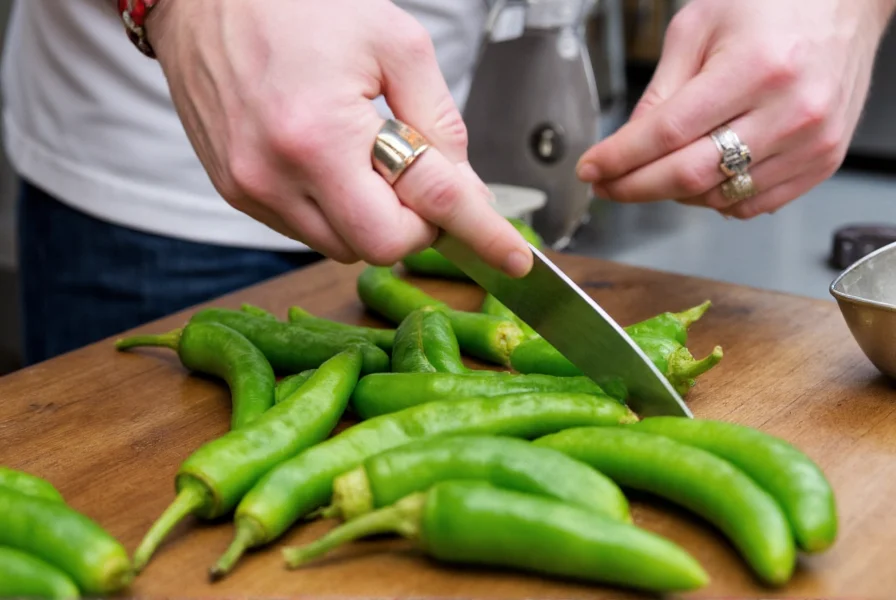Understanding the precise heat level of serrano peppers is essential for home cooks and culinary professionals who want to balance flavor and spice in their dishes. Unlike standardized measurements, chili pepper heat can fluctuate based on multiple environmental factors, which explains why one serrano might feel dramatically hotter than another from the same batch.
Decoding the Scoville Scale for Serrano Peppers
The Scoville scale, developed by pharmacist Wilbur Scoville in 1912, measures the concentration of capsaicinoids—the compounds responsible for a pepper's heat. While modern high-performance liquid chromatography (HPLC) provides more precise measurements, the Scoville Heat Unit (SHU) remains the standard reference for consumers.
Serrano peppers occupy a distinct position on this scale. Their heat range of 10,000-23,000 SHU means they deliver approximately 2-9 times more heat than a standard jalapeño. This significant difference explains why substituting serranos for jalapeños in recipes without adjustment can lead to unexpectedly spicy results.
| Pepper Variety | Scoville Heat Units (SHU) | Relative Heat Compared to Serrano |
|---|---|---|
| Bell Pepper | 0 SHU | 0x (No heat) |
| Jalapeño | 2,500-8,000 SHU | ⅓ to ¾ of serrano heat |
| Serrano | 10,000-23,000 SHU | Baseline |
| Cayenne | 30,000-50,000 SHU | 1.5-2x hotter than serrano |
| Habanero | 100,000-350,000 SHU | 5-15x hotter than serrano |
Factors Influencing Serrano Pepper Heat Variability
Several elements contribute to the wide range in serrano pepper heat levels:
- Stress conditions: Peppers grown in drier, hotter environments typically develop higher capsaicin concentrations as a natural defense mechanism
- Maturity stage: Fully ripe red serranos often register higher on the Scoville scale than their green counterparts
- Plant genetics: Different serrano cultivars naturally produce varying heat levels
- Part of the pepper: The placenta (white ribs) contains the highest concentration of capsaicin, while the flesh is significantly milder
This natural variability explains why serrano pepper heat comparison can be challenging. Two serranos from the same plant might differ substantially in heat intensity, making precise measurement difficult without laboratory testing.
Practical Culinary Applications of Serrano Peppers
Understanding serrano pepper spiciness range is crucial for successful cooking. Their bright, grassy flavor with citrus notes makes them ideal for:
- Salsas and pico de gallo where jalapeños might be too mild
- Infused oils and vinegars for controlled heat distribution
- Marinades for meats where deeper heat penetration is desired
- Traditional Mexican dishes like chiles en nogada and various moles
When substituting serranos for other peppers, remember that serrano vs jalapeno heat difference requires careful adjustment. One serrano often equals 2-3 jalapeños in heat intensity, though flavor profiles differ significantly. For those sensitive to spice, removing seeds and membranes can reduce heat by up to 80% while preserving flavor.

Safety Considerations When Handling Serrano Peppers
Due to their significant heat level, proper handling techniques are essential:
- Always wear gloves when cutting serranos to prevent capsaicin transfer to sensitive areas
- Avoid touching your face while preparing hot peppers
- Wash cutting boards and utensils thoroughly with soapy water after use
- If experiencing skin irritation, use milk or oil-based products to neutralize capsaicin (water spreads the oil-based compound)
Understanding how hot are serrano peppers scoville measurements translate to real-world cooking helps prevent overly spicy dishes while maximizing their distinctive flavor profile. Their position between jalapeños and cayennes makes them a versatile option for those seeking more heat than common supermarket peppers but less than extreme varieties.

Measuring Heat in Your Kitchen
Without laboratory equipment, assessing serrano pepper heat level compared to jalapeno can be done through:
- The sniff test: More pungent aroma often indicates higher heat
- Visual inspection: Thinner-walled peppers with more pronounced striations typically run hotter
- Gradual tasting: Start with tiny amounts and wait 2-3 minutes for full heat sensation to develop
- Seed density observation: Peppers with more developed placental tissue often contain higher capsaicin concentrations
Remember that serrano pepper scoville units chart values represent averages—your specific peppers may vary significantly. When precision matters, consider using measured amounts of dried pepper powder rather than fresh peppers for consistent results.











 浙公网安备
33010002000092号
浙公网安备
33010002000092号 浙B2-20120091-4
浙B2-20120091-4